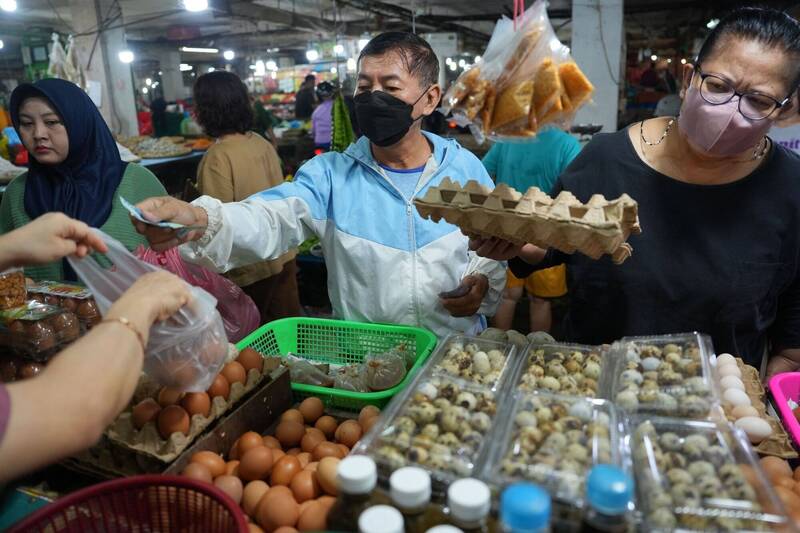The wallets of consumers in many countries have been compressed by the price increase of eggs. According to the analysis of food research organizations and US media, this wave of egg shortage and price increase is caused by factors such as bird flu, and rising feed and transportation costs.
(Bloomberg)
[Central News Agency] Taiwan has been short of eggs recently, and the wallets of consumers in many countries have also been compressed by the price increase of eggs. In January, egg prices in the United States increased by about 70% compared with the same period last year.
According to analysis by food research organizations and US media, this wave of egg shortages and price increases are caused by factors such as bird flu, rising feed and transportation costs.
According to the Global Food Consumers' Forum (Global Food Consumers' Forum), the price of eggs in New Zealand in December last year rose by 28.8% compared with the same period in 2021; the price of eggs in the European Union (EU) rose by 75% in the past 6 months; The price of eggs has risen by 13% since September 2021; some supermarkets in Australia and the United Kingdom have also limited the number of eggs purchased by each customer.
Please read on...
According to the latest U.S. consumer price index, egg prices rose 8.5 percent in January from the previous month and about 70 percent from a year earlier, The Wall Street Journal reported.
Now the US wholesale egg price has dropped from the record high in December last year. The retail price of a dozen ordinary eggs has remained in the range of US$4 since the end of December last year. The retail price in the week of February 4 was US$4.13 (about NT$126. ), down from $4.40 in the week ended Jan. 21.
"Retailers won't be willing to drop egg prices back to 'normal' levels for a long time after that," said Brian Earnest, animal protein economist at CoBank, a U.S. farm lender.
Rising egg prices will also affect egg-based products such as bread, cakes, and salad dressings.
The Global Food Consumers Forum pointed out that the lack of chickens and eggs in many countries may be caused by conflicts in Ukraine, extreme weather events, global instability, supply chain problems, and rising costs of fuel, feed, packaging and production, etc. The response is bird flu.
At present, the United States, Europe, and the United Kingdom are deeply involved in the worst bird flu epidemic in history.
Thirty-seven countries in Europe have been affected, and for the first time, the epidemic has crossed the Atlantic Ocean along with migratory birds, affecting the United States and Canada.
Poultry processing companies are investing in new biosecurity measures and other precautions to reduce the spread of the virus across farms, but as soon as workers step on wild bird droppings and then enter poultry houses without cleaning their shoes, the virus can spread, killing a whole batch of poultry workers. Poultry died.
HPAI has killed about 58 million birds since early 2022, the deadliest outbreak since 2015, when 50 million birds were culled, according to the US Agriculture Department.
In the last week of December last year, the US egg inventory was 29% lower than that at the beginning of last year; by the end of December last year, more than 43 million laying hens had died due to bird flu.
"Smaller-than-usual shell egg inventories through the end of (2022), combined with increased demand stemming from the peak baking season, contributed to several weeks of record egg prices," USDA economists said in a January research note. "
Earnest of CoBank said that the rise in egg prices in the United States is also a part of overall food inflation. The factors behind it include increased labor costs, raw materials, and logistics costs; Continuing to face higher egg prices.
In addition to affecting eggs, bird flu has also tightened the supply of commercial meat turkeys in the United States.
Last spring, turkey breast prices topped $6.50 a pound, a record high, according to federal government data.
